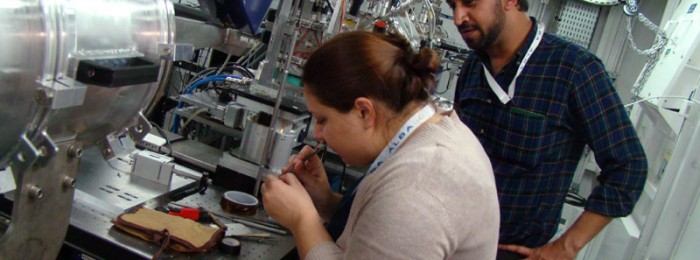CDRSP Researchers in Barcelona to use ALBA Synchrotron
Tissue engineering is aiming at generating biological substitutes that are capable of restoring diverse tissue functions and this specific field is becoming of great importance in today’s society. The growing elderly population and the search for less invasive treatments make tissue engineering one of the most promising techniques that aim to improve human wellbeing. However, biomaterials are still very complex to obtain and further research needs to be done to develop the field of regenerative medicine.
A group of researchers from the Centre for Rapid and Sustainable Product Development of the Polytechnic Institute of Leiria (Portugal) have designed and produced a biodegradable 3D structure that once implanted in the injured bone, it helps to repair the tissue. This 3D structure acts as a scaffold that provides the appropriate environment forcells to develop and in time it is gradually being absorbed by the new growing tissue. This scaffold is made of a polymer which is as porous and as hard as bone, and it tries to mimic as much as possible human tissue.

The CDRSP Team with the Beamline Scientists at ALBA
Researchers have used high resolution synchrotron light at NCD (Non-Crystalline Diffraction) beamline in ALBA, in order to examine the morphology of the polymer used in the scaffold. “The success of this material relies on the structure of the scaffold. This is why is so important to know in detail the chemical composition and physical architecture of the 3D matrix we have created”, says Geoffrey Mitchell, main researcher of the experiment. While collecting x-ray data, the research group have also tested the mechanical resistance of the scaffold, using a tensiometer, in order to evaluate structural changes in polymer morphology while applying mechanical deformation in situ.
The results of this research will be extremely beneficial in improving the treatment of for bone injuries and fractures, as they will aim to develop new methods of surgical intervention that will avoid consecutive follow up operations, and they will also promote the development of new research areas in tissue regeneration.
This material has been successfully tested in sheep due to a collaboration owith the University of Queensland (Australia). The following step will be trying this material in bigger animals with the aim of having this technique available for humans in the next five years.
The ALBA Synchrotron
ALBA is the Spanish synchrotron light source. It is a complex of electron accelerators that produce synchrotron light, which allows visualization of the atomic structure of matter as well as the study of its properties.
ALBA is in operation since May 2012 and has seven experimental beamlines.
This scientific infrastructure produces 5.000 hours of beamtime per year and is available to the academic and the industrial sector and gives service to more than 1.000 researchers per year.




